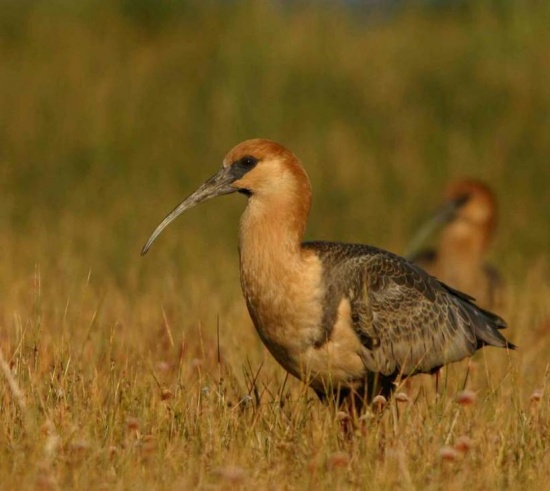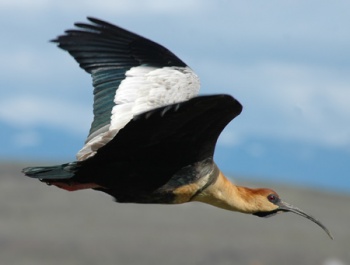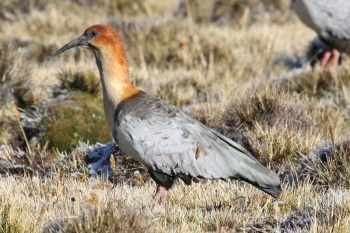| This article is incomplete. This article is missing one or more sections. You can help the BirdForum Opus by expanding it. |
- Theristicus melanopis
Includes: Andean Ibis
Identification
Distribution
South America: found in Ecuador, coastal Peru, Bolivia, northern Chile and Argentina south to Tierra del Fuego.
Taxonomy
Two subspecies accepted which are sometimes considered full species:
- T. m. melanopis (Black-faced Ibis)
- T. m. branickii (Andean Ibis)
With the latest update of Clements checklist, there is now a majority of checklists that recommend lumping these two forms in one species.
Habitat
Wet grasslands, open grassy and agricultural fields, salt lagoons, arid sandy areas.
Behaviour
Diet
The diet includes insects, molluscs. The will also take small chicks and mammals.
Breeding
Their nests can be found in woodland, on cliffs and in rocky gullies. The clutch consists of two eggs, which are incubated by the female for 28 days.
References
- Clements, JF. 2009. The Clements Checklist of Birds of the World. 6th ed., with updates to December 2009. Ithaca: Cornell Univ. Press. ISBN 978-0801445019.
- Avibase
- ArKive
- BF Member observations
Recommended Citation
- BirdForum Opus contributors. (2024) Black-faced Ibis. In: BirdForum, the forum for wild birds and birding. Retrieved 28 April 2024 from https://www.birdforum.net/opus/Black-faced_Ibis






